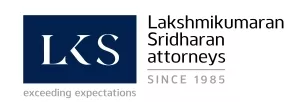- in United States
- with readers working within the Retail & Leisure industries
- within Technology, Government and Public Sector topic(s)
We have discussed anti-profiteering provisions in detail in Part 1 of the article series. Further, investigations carried out by NAA and observations of the Delhi High Court are discussed in Part 3 of the article series.
In this article, we have discussed some of the nuances adopted internationally at the time of GST implementation, specifically in Australia and Malaysia.
Australia:
In Australia, GST was implemented in 1999 replacing the erstwhile Wholesale Sales Tax. At that time, the Australian Competition and Consumer Commission ('ACCC') was entrusted with the responsibility of overseeing pricing responses to the introduction of Goods and Services Tax for a period of three years between 1999 and 2002.
Section 75AU of the Trade Practices Act, 1974 dealt with price exploitation, and provided for consideration of factors such as supplier's input costs, supply and demand conditions and other relevant matters. Further, Section 75AV(1) of the aforesaid Act provided for ACCC to formulate detailed guidelines about when prices may be regarded to be in contravention of the price exploitation provision. Accordingly, the ACCC had framed detailed guidelines in July 1999 and finalized them by publishing the same in the official gazette in March, 2000 after taking inputs from various stakeholders.
The fundamental principle laid down in the aforesaid guidelines was based on 'net dollar margin rule'. That is, if taxes are reduced by $1, prices should be reduced by at least $1. Further, if taxes are increased by $1, prices cannot be increased beyond $1.
The guidelines recognized that competition will generally take care of price exploitation, and that situations where businesses have substantial market power will be particularly scrutinized.
The guidelines also provided for consideration of various factors, including:
- Cost savings
- Rebates, settlements and discounts
- Cost of complying with New Tax System changes
- Averaging the impact of taxes and costs across goods or services, especially with respect to price point products such as $1.99, $2.99 products
- Supplier's costs
- Supply and demand conditions
Detailed 40-page guidelines were issued including illustrations for application of guidelines, as a handbook / guide to be considered by the businesses dealing in such regulated supply products.
Malaysia:
Similarly, in Malaysia, at the time of GST implementation in 2015, the Price Control and Anti-Profiteering Act, 2011 was also implemented, to control prices of goods and charges of services, and to prohibit unreasonably high profiteering by suppliers.
Section 15 of the said Act provided that the Minister shall prescribe the mechanism to determine whether the profit is unreasonably high considering various factors, including but not limited to:
- Tax imposition
- Suppliers' costs,
- Supply and demand conditions
- Other relevant matters in relation or price of goods and services, etc.
Accordingly, detailed guidelines were laid down under the regulations issued in 2014 and 2016, and the same were amended from time to time until withdrawal of GST in 2018.
The Hon'ble Delhi High Court, while giving benefit for cost increase, held that reference to Australian and Malaysian laws is incorrect because the said provisions were in the nature of price control mechanism.
It can be seen that various countries had issued guidelines from time to time. Even under the GST provisions in India, Rule 126 of the CGST Rules provided powers to the Authority to determine methodology and procedure for determination as to whether benefit is passed on or not. However, the guidelines1 issued by National Anti-profiteering Authority in this regard were merely procedural in nature, dealing with the procedure in which the NAA shall conduct its own business. It is interesting to note that such guidelines issued by NAA provided itself with powers to inquire into allegations of contravention of Section 171 of the CGST Act on its own motion or on receipt of complaint. Such powers of suo moto inquiry were otherwise not forming part of CGST Rules, which provided for application based screening, and subsequent investigation by DGAP leading to passing of order by the Authority.
Footnote
1. https://www.naa.gov.in/docs/procedure%20_methodology_18.pdf
The content of this article is intended to provide a general guide to the subject matter. Specialist advice should be sought about your specific circumstances.



